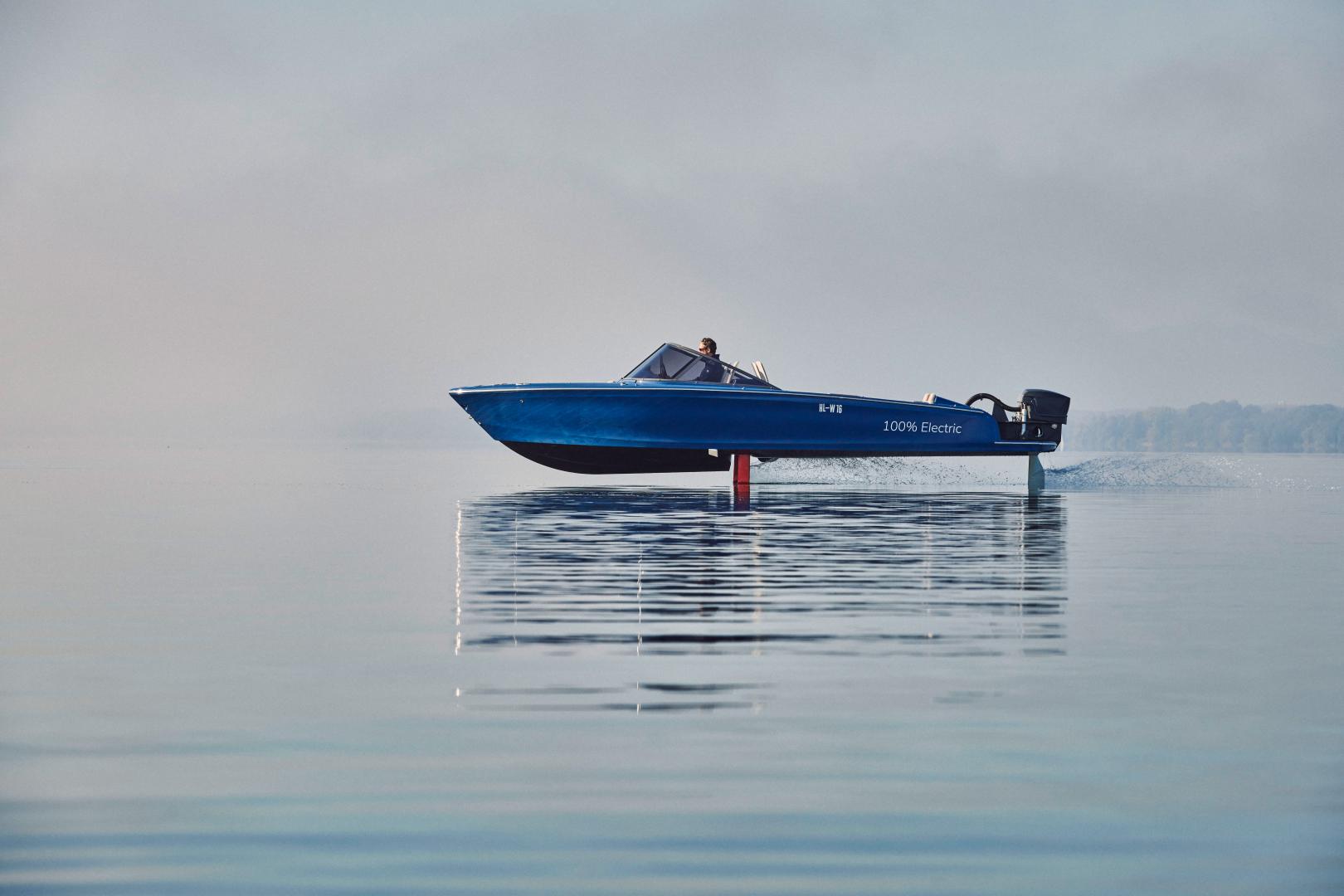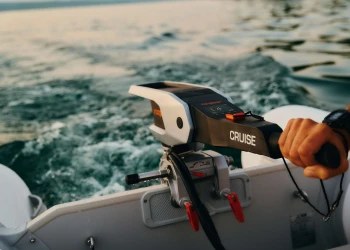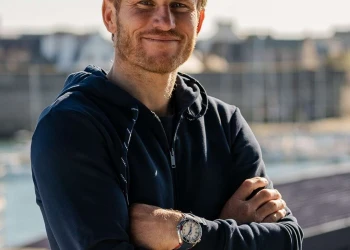
Candela Seven
Torqeedo powers Candela Seven, the world’s 1st electric hydrofoil boat
Stockholm, Sweden (17 December 2020) – On the island of Lidingö in the Stockholm archipelago, you’ll find the headquarters of Candela Speed Boat. The startup’s engineers, programmers, and mathematicians have spent the last few years bringing the first electric hydrofoil boat to market, the Candela Seven. This speedboat flies above the surface of the water at cruising speed, its weight resting on two underwater wings called hydrofoils. Propelled by the Torqeedo Deep Blue 50i, the boat has a top speed of 55 km/h and a range of 92 km when driven at 37 km/h.
“The Candela Seven combines minimum energy consumption with maximum performance,” said Dr Ralf Plieninger, managing director of Torqeedo. Plieninger is in charge of technology and operations at Torqeedo, and he’s excited about what Candela’s success means: “The electric hydrofoil is a game-changer for marine electric mobility.”
The story of the Candela Speed Boat is rooted in the Stockholm archipelago. One day, founder and CEO Gustav Hasselskog got into his gasoline-powered motorboat at his summer house to go to the island supermarket—his kids wanted ice cream. At first, he was shocked how expensive the ice cream was: €2.50! But then he calculated the fuel cost for the round trip: €40 in gasoline. “Get as much ice cream as you want,” he told his children. On the ride back, Hasselskog started thinking about Tesla automobiles. What if you could combine modern electric motors with the hydrofoils that are now standard equipment in competitive sailboat racing? The idea captivated him. But it’s a long journey from an idea to a market-ready product.
Nobody knows that better than the Torqeedo team. Now the world leader in electric drives for watercraft up to 120 feet, Torqeedo was founded for very similar reasons. “Even though we’ve grown a lot since then,” says Plieninger, “we’ve held onto our startup culture. We enjoy solving problems and doing things differently.”

The Candela team was trying to crack a challenging problem. A boat with a length of 7.5 meters consumes 12 to 18 times more fuel than an automobile, which is why it makes ecological and economic sense to switch from gasoline to electric motors. But since most batteries have a lower energy density than gasoline, electric boats must be optimised to have a long range or high speed, but not both.
The Candela Seven is 7.7 meters long and seats six. Its Deep Blue electric motor accelerates the boat smoothly and silently. For the first few meters, it feels like you’re in a very nice, standard boat. But everything changes at 27 km/h—that’s when the craft rises out of the water onto its hydrofoils. “The energy consumption drops 80 per cent in hydrofoil mode—that gives us a range similar to a gasoline engine,” says Hasselskog. The boat runs very smoothly on its hydrofoils - there’s no slamming into waves, and no noise.
The Candela Seven’s design is based on insights from the field of aeronautics. The hull and deck are made of carbon fibre and weighs 180 kg. At a total weight of 1300 kg, the Candela Seven is thirty per cent lighter than a conventional fibreglass boat. “Water forms a complex surface, which is why a lot of boats don’t run smoothly,” says Alexander Sifvert. “The biggest challenge was keeping the boat stable in hydrofoil mode. That required a whole lot of math, fluid dynamics simulations, and mechanical engineering.”
Candela has developed a ‘flight control’ system with multiple sensors that supply it with GPS, sonar, and engine data. The system then mechanically adjusts the main and aft foils on the fly. This keeps the boat steady in heavy waves or during sharp turns. And if you’re travelling through shallow water, the hydrofoils retract by tapping the touch screen.





